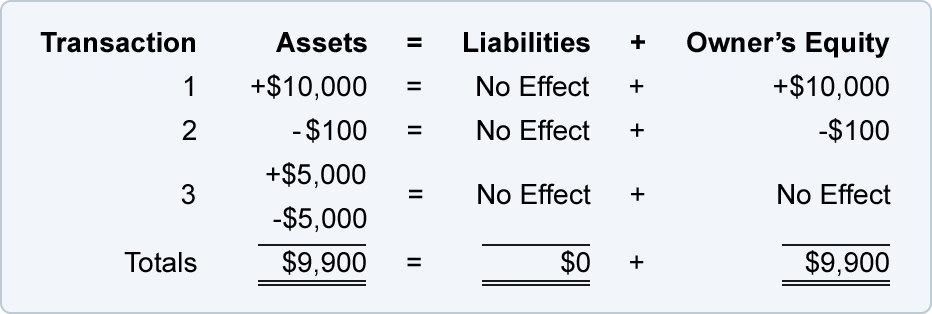Content

Inventory turnover ratio is an efficiency ratio that measures how well a company can manage its inventory. It is important to achieve a high ratio, as higher turnover rates reduce storage and other holding costs. It is vital to compare the ratios between companies operating in the same industry and not for companies operating in different industries.
Kroger: Fairly Valued With A Clear Path To High-Single-Digit Or Low-Double-Digit Returns – Seeking Alpha
Kroger: Fairly Valued With A Clear Path To High-Single-Digit Or Low-Double-Digit Returns.
Posted: Mon, 22 Nov 2021 15:39:00 GMT [source]
Divide your company’s costs of goods sold during the year by the average inventory to find the inventory turnover ratio. In this example, if your company sold goods costing the company $320,000 during the year, divide $320,000 by $40,000 to find that inventory turns over eight times per year. Keep in mind, there are a few different ways to calculate inventory turnover ratio involving different inputs. In this post, we’ll highlight how to calculate inventory ratio using the costs of goods sold and average inventory.
Average Stock
Before we dive into the inventory turnover formula, it’s helpful to define some inventory terms. Instead of ordering a higher quantity, it is better to buy a lower quantity and replenish the stock once the product’s major quantity is sold. First, he considers marking-down styles from the previous season as each season approaches.
Days Sales of Inventory – DSI Definition – Investopedia
Days Sales of Inventory – DSI Definition.
Posted: Mon, 22 Oct 2018 17:48:20 GMT [source]
The time it takes a company to sell through its supply can vary greatly by industry. If you don’t know the average inventory turns for the industry in question, then the formula won’t help you very much. You can inventory turnover ratio save yourself a lot of trouble when finding ITRs by looking at a company’s balance sheet and income statement. COGS is often listed on the income statement; inventory balances will be found on the balance sheet.
What Is Inventory Turnover? + 6 Ways To Improve Your Inventory Turnover Ratio
However, inventory can also include raw materials that go into the production of finished goods. For example, a clothing manufacturer would consider inventory the fabric used to make the clothing. High volume, low margin industries—such as retailers and supermarkets—tend to have the highest inventory turnover. Learn more about how you can improve payment processing at your business today. And work out if you’re paying the right amount and charging your customers accordingly. In the meantime, start building your store with a free 14-day trial of Shopify. If you produce fast-moving consumer goods like food or drink items, or other perishables, then your ITR should be much higher than, for example, a company that builds custom furniture.

Contact your vendors to reduce the price they quote you for the inventory items. That is a company would take 6 months to sell and replace all inventories. ShipBob also allows you to set automaticreorder pointnotifications to remind you when it’s time to replenish each item at eachecommerce fulfillmentcenter. Choosing the right reorder notification point will ensure that there is time to send and restock more inventory before orders are put on hold for lack of inventory.
How To Calculate And Analyze Inventory Turnover Ratio
Wasp began with the desire to provide easy, straightforward, and error-free tracking solutions for SMBs. At the time, Wasp recognized most tracking solutions were designed – and priced – for enterprise-level companies, forcing most SMBs to track business-critical items manually. As Wasp’s solutions evolved, the company expanded its client base to include even the largest enterprise-level clients, while maintaining a stronghold in the broad SMB market.
Is inventory turnover a liquidity ratio?
Inventory turnover ratio is one of the financial ratios that provide information about the liquidity of a company. Liquidity ratios identify whether a company can meet its short-term financial obligations. … Having a large quantity of unsold inventory may mean interest expense and additional cost for storage.
It takes into account the beginning inventory balance at the start of the fiscal year plus the ending inventory balance of the same year. In both types of businesses, the cost of goods sold is properly determined by using an inventory account or list of raw materials or goods purchased that are maintained by the owner of the company. A high inventory turnover generally means that goods are sold faster and a low turnover rate indicates weak sales and excess inventories, which may be challenging for a business. A lower DSI is ideal since it would translate to fewer days needed to turn inventory into cash.
Inventory Turnover Ratio: Why Its Important And How To Calculate It
Once you have your timeframe and average inventory, simply divide the cost of goods sold by the average inventory. And if you already have a delivery team, start improving your efficiency today with OptimoRoute. We offer a30-day free trial, so you can take our software for a spin with zero risk.Learn moreabout our advanced features. Jewelers can sustain inventory turnover ratios lower than the 4 to 6 range because their profit margins and markups on individual items are typically much higher than that of a T-shirt business.

Toast offers many tools to track, analyze, and manage inventory in your restaurant , including partners like BevSpot, Bevager, and Restaurant365. Many vendors are open to negotiating when it comes to buying inventory. With food prices rising, try to lock in long-term prices for food items that you’re likely to use regularly. Purchase in bulk, and consider talking to a variety of food and drink vendors and comparing prices between them.
Inventory Turnover Formulas
However, a car dealer will have a low turnover due to the item being a slow moving item. Reducing holding cost increases net income and profitability as long as the revenue from selling the item remains constant. The organization spends less money on rent, utilities, insurance, theft and other costs of maintaining a stock of good to be sold.
What is Good Inventory Turnover Ratio for Retail Businesses? via @Ecwid https://t.co/WBUPpgcZPI
— Financial Gym For Business ??? (@FinancialGym4B) November 24, 2021
The inventory turnover ratio is an efficiency ratio that measures how quickly inventory is turned into sales. A high inventory turnover is generally positive and means a company has good inventory control while a low ratio typically indicates the opposite. There are exceptions to this rule that we also cover in this article.
Cost Of Goods Sold
Make sure youoffer competitive deliveryoptions, especially if you sell any type of food item. Over time, though, you’ll want to move past industry averages to maximize your company’s profits. Sorry, there’s no silver bullet for this — you need to dive into your data and income statements to find out what’s best for your profitability and growth. But while those numbers are good to know, your industry’s average ITR isn’t necessarily a good inventory turnover ratio for your business. Reduced holding costs increase net income and profitability as long as the revenue from selling the item remains constant. An inventory turnover formula can be used to measure the overall efficiency of a business.
Smart ordering processes can increase profits as well as inventory turnover. Learn to calculate inventory turnover ratio, and the best ways to manage your inventory purchasing plan to ensure a profitable business. Now that you have both average inventory and the cost of sales, you can determine your inventory turnover ratio. An inventory turn formula has two elements – current inventory and sales. So, the first step to calculating the ratio is determining your average inventory and the cost of goods you have sold over a particular period of interest, such as fiscal year, quarter, or month.
Inventory turnover indicates how well a company is managing its stock. A company may overestimate demand for their products and purchase too many goods. Conversely, if inventory turnover is high, this indicates that there is insufficient inventory and the company misses out on sales opportunities. Low inventory turnover, on the other hand, would likely indicate weaker sales and declining demand for a company’s products. When comparing or projecting inventory turnover, one must compare similar products and businesses. For example, automobile turnover at a car dealer may turn over far slower than fast-moving consumer goods sold by a supermarket (snacks, sweets, soft drinks, etc.). Taking it a step further, dividing 365 days by the inventory turnover shows how many days on average it takes a company to sell its inventory.
Start by determining a time frame you want to analyze (annual, monthly, etc.). Next, find these three important numbers — the cost of goods sold, beginning inventory , and ending inventory — to calculate the average inventory. Ratio AnalysisRatio analysis is the quantitative interpretation of the company’s financial performance. It provides valuable information about the organization’s profitability, solvency, operational efficiency and liquidity positions as represented by the financial statements.
- Depending on the industry that the company operates in, inventory can help determine its liquidity.
- The fact that washing machines, for example, sell more slowly than the latest fashion doesn’t mean you’re doing anything wrong.
- The inventory turnover ratio is a simple method to find out how often a company turns over its inventory during a specific length of time.
- If you can get there, you’ll increase demand and revenue together.
- Knowing this number can inform how you plan your purchasing, how you sell your goods and more.
Generally, if the product sale is faster, inventory operation is more efficient. This is because the inventory churning would be faster and thereby the inventory turnover ratio would be better.
A simple inventory turnover formula can help you understand and improve your inventory management. When you get clear about your inventory turnover ratio, you can run your business with smaller carrying costs while you optimize your stock levels.
The ideal inventory turnover ratio varies from business to business. The best solution is to adopt an inventory management system that can gather essential statistics, determine the economic order quantity, and find the perfect balance for your business. You can also find which products are selling best, maintain optimum stock levels, and even automate your stock management, so it is a great deal for any business. Inventory turnover ratio is the business metric that tells you how healthy your product business is.
Author: Loren Fogelman






